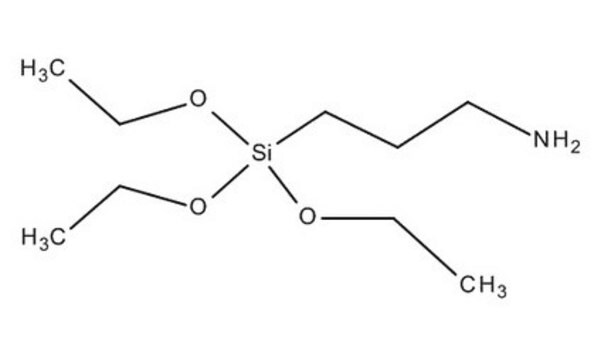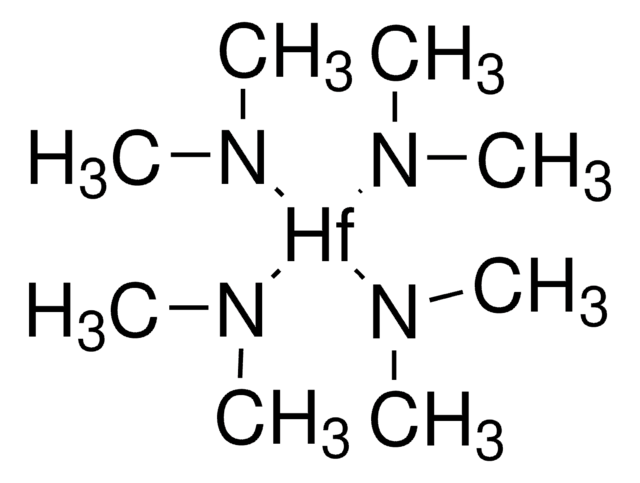706493
(3-aminopropil)trietoxisilano
packaged for use in deposition systems, ≥98%
Sinónimos:
3-Trietoxisililpropilamina, APTES, APTS
About This Item
Productos recomendados
Nivel de calidad
Ensayo
≥98%
Formulario
liquid
bp
217 °C/760 mmHg (lit.)
densidad
0.946 g/mL at 25 °C (lit.)
cadena SMILES
CCO[Si](CCCN)(OCC)OCC
InChI
1S/C9H23NO3Si/c1-4-11-14(12-5-2,13-6-3)9-7-8-10/h4-10H2,1-3H3
Clave InChI
WYTZZXDRDKSJID-UHFFFAOYSA-N
¿Está buscando productos similares? Visita Guía de comparación de productos
Categorías relacionadas
Descripción general
Palabra de señalización
Danger
Frases de peligro
Consejos de prudencia
Clasificaciones de peligro
Acute Tox. 4 Oral - Eye Dam. 1 - Skin Corr. 1B - Skin Sens. 1
Código de clase de almacenamiento
8A - Combustible corrosive hazardous materials
Clase de riesgo para el agua (WGK)
WGK 1
Punto de inflamabilidad (°F)
199.4 °F - closed cup
Punto de inflamabilidad (°C)
93 °C - closed cup
Equipo de protección personal
Faceshields, Gloves, Goggles, type ABEK (EN14387) respirator filter
Elija entre una de las versiones más recientes:
Certificados de análisis (COA)
¿No ve la versión correcta?
Si necesita una versión concreta, puede buscar un certificado específico por el número de lote.
¿Ya tiene este producto?
Encuentre la documentación para los productos que ha comprado recientemente en la Biblioteca de documentos.
Los clientes también vieron
Artículos
igma-Aldrich.com presents an article regarding the savannah ALD system - an excellent tool for atomic layer deposition.
Nanocomposite Coatings with Tunable Properties Prepared by Atomic Layer Deposition
Silica is a very popular inorganic nanomaterial used in a wide range of applications including fillers for rubber, catalyst supports, separation media, carriers in food and agriculture, and abrasive/anticaking agents in cosmetics. It is also widely believed to be an important material for biomedical applications for following reasons.
High Purity Metalorganic Precursors for CPV Device Fabrication
Global Trade Item Number
| Número de referencia del producto (SKU) | GTIN |
|---|---|
| R858587-1EA | |
| 706493-20ML | 4061838148155 |
Nuestro equipo de científicos tiene experiencia en todas las áreas de investigación: Ciencias de la vida, Ciencia de los materiales, Síntesis química, Cromatografía, Analítica y muchas otras.
Póngase en contacto con el Servicio técnico











![[3-(Diethylamino)propyl]trimethoxysilane 96%](/deepweb/assets/sigmaaldrich/product/structures/369/056/3e3cd51a-0662-4e06-a10a-866ae1d6c290/640/3e3cd51a-0662-4e06-a10a-866ae1d6c290.png)
![N-[3-(Trimethoxysilyl)propyl]ethylenediamine 97%](/deepweb/assets/sigmaaldrich/product/structures/149/508/f87a9a89-f138-4c5e-9fe0-6561914241c3/640/f87a9a89-f138-4c5e-9fe0-6561914241c3.png)


